Class 2A “probable carcinogen”
In March 2015 the International Agency for Research on Cancer (IARC) which is a division of the World Health Organisation (WHO) stated that Monsanto’s herbicide known as Roundup is a Class 2A which indicates a “probable carcinogen”. This being due to the active ingredient within Roundup which we know as Glyphosate.
About time!
This is a determination that has not come too soon and must be a blow to Monsanto and other chemical companies. It will herald the way for all foods containing this poison to have to declare the danger to health on warning labels. Some of the population have not even heard of this carcinogen and need to be informed how dangerous it is to consume this toxic chemical. The problem with Glysophate is that it cannot easily be removed or washed away and will remain in the food for more than a year.
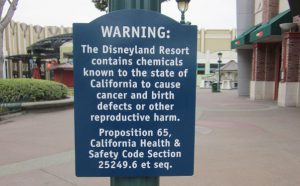 Proposition 65
Proposition 65
The IARC is deemed to be the gold standard for carcinogenic studies and is one of the agencies which the California agency of Environmental Hazards gets its data for Proposition 65. California’s Proposition 65, also called the Safe Drinking Water and Toxic Enforcement Act, was enacted in 1986. It is intended to help Californians make informed decisions about protecting themselves from chemicals known to cause cancer, birth defects, or other reproductive harm. Unfortunately, Prop 65 is not taken seriously by many residents because the most spurious and unlikely of items are often labelled with Prop 65 including this Disneyland resort! Ridiculous labelling like this, just serves to disguise those chemicals that are really hazardous to our health.
Roundup boosts antibiotic resistance
Another problem found through research is that Roundup appears to boost antibiotic resistance by switching on a set of genes in the bacterium. This allows it to become more resistant to antibiotics. E. coli and salmonella were specifically named as candidates for this antibody resistance. These two bacteria are responsible for numerous cases of illnesses from food. Agricultural and residential applications are levels of exposure which would allow this switching-on to occur.
resistant to antibiotics. E. coli and salmonella were specifically named as candidates for this antibody resistance. These two bacteria are responsible for numerous cases of illnesses from food. Agricultural and residential applications are levels of exposure which would allow this switching-on to occur.
Roundup most commonly used herbicide
Monsanto’s Roundup is one of the most commonly used herbicides in the world, with around one billion pounds of the stuff sprayed on crops each year. This means that the population is eating glyphosate contaminated food regularly.
Research scientist and chemist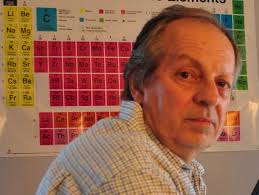
A research scientist and chemist Dr Anthony Samsel who has had first hand experience of this chemical, remembers how his health started to suffer after using the chemical on his farm back in the 1970s and 80s. when it first came on the market. He says: “I believed the hype like all the other farmers and people around the world do, that glyphosate is as safe as salt and that it broke down into harmless chemicals that did no harm. I believed all that stuff until I started studying the chemical. Being a research scientist, a chemist, I knew what to look for. Having worked in public health, I was familiar with how chemicals had effects on the human body and on animals. So I started approaching it from that aspect.”
Urine acted like weed killer!
He explained how he had run out of coyote urine which was effective at deterring deer from eating his crops. So he used his own urine and was surprised to notice that where he’s sprayed it, weeds were dying. No Roundup was sprayed there and he realized his own urine was acting like a weed killer!
He did some controlled experiments with other plants and the same thing happened. He then started to look at his diet. He realized that he may be contaminated because he was using glyphosate on his farm. He then realized the implications for GM crops which used Glyphosate for weed control.
 USDA not testing for glyphosate
USDA not testing for glyphosate
Dr Samsel starting looking for information and data on testing the effects of this chemical. Testing for glyphosate is an expensive process which was the excuse given by the US Department of Agriculture (USDA) for not testing for it so there were no data to find. Dr Samsel did evendually convince the USDA to release results of some tests done back in 2011. 400 samples of soybeans were tested and it was found that more than 90% of the soybeans had glyphosate residue in them.
Cherry picking data?
Dr Samsel continues “I started looking at the data. I noticed that the amount of aminomethylphosphonic acid (AMPA), which is the metabolite of glyphosate, was greater than that of the glyphosate itself. If you analyze the glyphosate, you’re going to get glyphosate if the residue is in the crop, but you’re also going to get the metabolite AMPA. But looking at the numbers, they just didn’t make sense. I believed they’ve cherry-picked the data so that the data didn’t exceed the [Environmental Protection Agency] EPA residue limits,”.
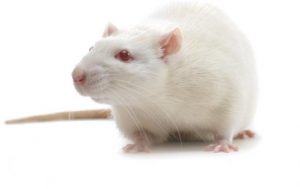 Monsanto’s studies
Monsanto’s studies
Dr Samsel asked the EPA for documents relating to Monsanto’s research, mostly done by outside contractors. Studies started in the late 1970s and finished around 1983 when the chemical was registered. Dr Samsel was curious as to what Monsanto knew about glyphosate from their research. At first the EPA refused Dr Samsel access despite him being a research scientist. Senator Shaheen’s office in New Hampshire persuaded the EPA to release the documents. They were not to be shared with foreign nationals under penalty of law.
Monsanto knew about cancer risk in 1981
Thousand upon thousands of documents were included with data on research done on laboratory animals. Monsanto knew in 1981 that glyphosate caused adenomas and carcinomas in the rats they studies. The highest incidence of tumorigenic growth occurred in the pituitary gland, second was in the mammary glands of female rats and thirdly in the testicles of male rats.
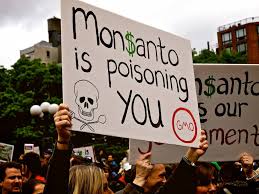 Monsanto wants Class 2 retracted
Monsanto wants Class 2 retracted
Monsanto is trying to get the IARC’s determination that glyphosate is a Class 2 “probably human carcinogen” retracted, this despite their own research and obvious knowledge of the serious affect this chemical has on laboratory animals.
Lower doses have greater effect
Research has shown that lower doses of glyphosate can have a greater effect than higher doses. These doses are similar to the glyphosate levels found in soy, corn, sugar and wheat in the American diet.
According to Dr Samsel “There was some work that was recently done where they looked at the CT scans of patients who had thyroid disease and also found that they had thymic hyperplasia. Well, guess what? In the rat study, they found high incidence of thymic hyperplasia as well as thyroid adenomas and carcinomas. If we don’t take this chemical out of the food supply, everybody will be affected. Everybody that is eating the Western diet. Everybody!”
You have been informed!
 You have been informed, take note and take action! Don’t be a victim! Eat as much organic as you can afford. Don’t use Roundup, don’t support Monsanto. It would appear the only way to be safe in this world is to grow your own food, treat yourself when you’re not well and try not to breath to much!!
You have been informed, take note and take action! Don’t be a victim! Eat as much organic as you can afford. Don’t use Roundup, don’t support Monsanto. It would appear the only way to be safe in this world is to grow your own food, treat yourself when you’re not well and try not to breath to much!!
Ches
Spread the word!

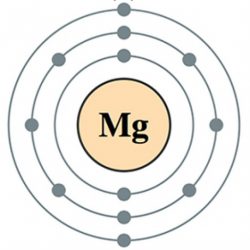
Hi Ches
Monsanto really are an evil company. I have looked into them in the past and Roundup is only one of the many harmful projects they have orchestrated. I’m sure they have known the effects of Roundup from the beginning and are most likely in league with big pharma to keep the the public spending billions on healthcare. They seem to have no limits when it comes to poisoning the planet.
This information needs to be spread far and wide.
Thanks for the great article.
Hi Stu and thanks for your input and comments. Spreading the word about Monsanto products is the only way we can attempt to protect ourselves. Most of the population now has glyphosate in their bodies according to studies. Just checking around my area in the UK, Roundup is everywhere. I’ve seen it in garages, greenhouses; I’ve seen gardeners using it for paths and weed control. Nearly every household with a garden seems to have a bottle of Roundup. The public are so trusting, they just don’t believe that a company would put profits above public health and as you so rightly say, the health of our planet. If the public stopped buying this stuff, perhaps something would be done, but it’s a long haul! Ches
Yes this is a beautiful article Ches, anyone who knows that we should question Monsanto and corporations like them who have blatantly been poisoning our food supplies for years is a super smart person 🙂
Like you say the words organic really doesn’t mean that much, especially in countries like the US or UK, where our “organic” food is often exposed and infected with all kinds of carcinogenic, and various mutative chemicals. Trump has already been speaking about the effects of Vaccines on many people, and i wouldn’t be surprised if him or Theresa May come out and start demanding we change our food growing processes.
I’m bookmarking this right now as i will be sharing this with friends on social media in the future – thanks for sharing this great work and please keep it up because your really informing the public!
Thanks for your comments and input Marley. The problem is many of us are too trusting of the authorities and those that supply our drugs and chemicals. Most of us are caring and honourable people and we paint scrupulous companies with our brush. When money and power takes over, you can kick caring and honourable out the window. Until the public realizes what most of these large consortiums are up to, things won’t change. Please do share with your friends and family. Ches
I keep shocking each time when reading how people are poisoning themselves. I understand that the use of chemicals is a matter of money for everybody involved in the chain of production but is it really worth it?
Regarding Organic food – how reliable are the labels about food being organic? Each time I am seeing such labels in supermarkets I keep questioning myself – can we believe it? If the product is in supermarket, it means the producer has to produce big amounts of it to ensure the demand. Is it possible to produce such big amounts in organic way? What do you think about this? I would really appreciate your input to clarify my doubts!
Hi Arta and thanks for your input. I have exactly the same doubts when I buy organic. I also worry about the so called organic chicken that I buy. I suppose buying meat from a butcher may be safer but when you see all that’s going on around us, how can we trust anyone. All we can do is our best to eat as safe as possible.
If you can grow your own food, that will help. At least you know how it has been grown and it is very rewarding consuming your own produce. But this is not possible for some people who live in an apartment or have no garden area.
What do I think? I think we need to become more au fait with what big pharma, big agra and the food companies are up to. We must realize they are just large companies who are in business for one thing and that’s profit. Our welfare is not on the top of their list. If it was, they would be running their businesses differently and have a different agenda. Their is much corruption within big business and we mustn’t be so trusting. Get wise and educate yourself. Do your own research and be one step ahead! Ches
Thank you for writing this illuminating article. I’m doing my best to only eat organic foods, but I’m definitely concerned about these chemicals and how they show up in our air and water. I’ve noticed the Prop 65 sign that you mentioned at many Starbuck’s coffee shops. It’s usually somewhere near a trashcan and it’s very unclear as to what it’s referring to (the coffee, the sugar packets, the walls). I think you’re right, signs like that de-legitimize the reality of how harmful these chemicals are.
Hi there Audrey and thanks for your comments. Yes, it is a bit ridiculous putting up a sign that isn’t specific. The public must be very confused as to what the signs refers to and are probably making up their own minds as to what is harmful. Ches